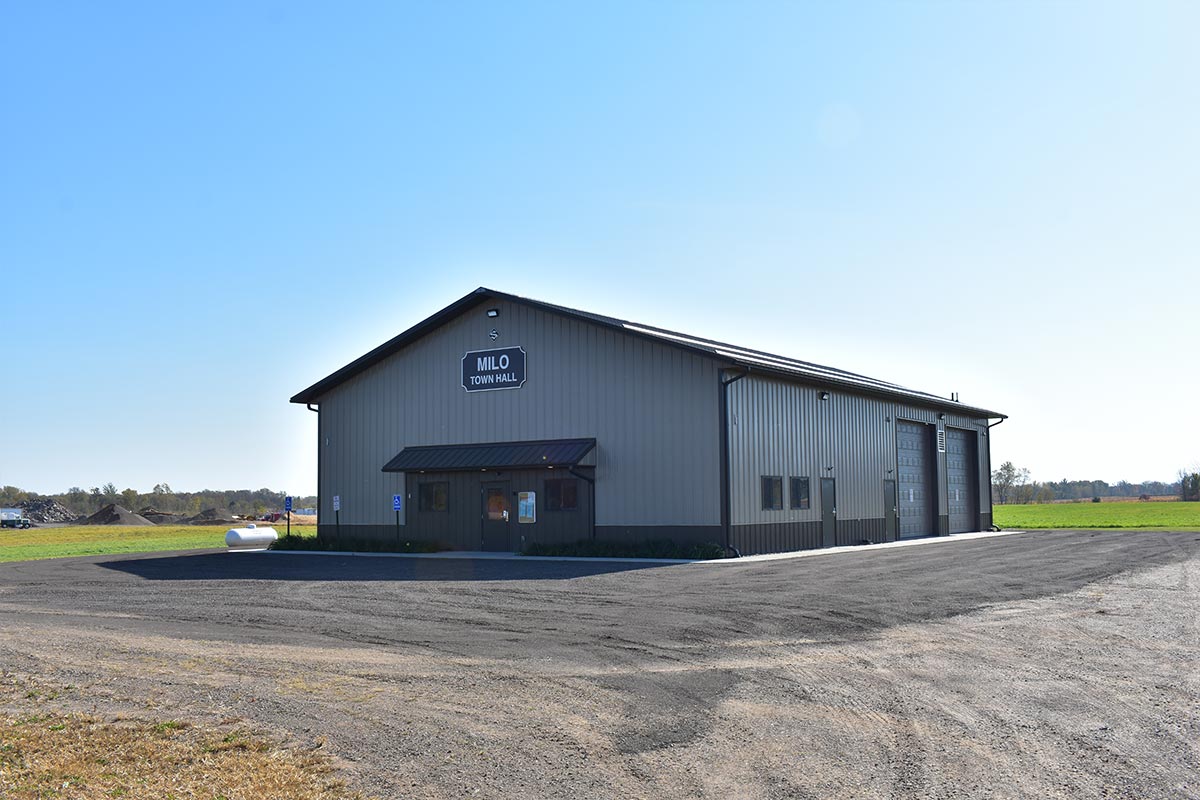

Mortgage and Construction Key Terms
Adjustable-Rate Mortgage (ARM)
A mortgage loan with an interest rate that periodically changes in response to the market or to Treasury bill rates.
Allowance
A sum of money set aside in the contract for items that have not been selected and named in the contract, such as a sum of money for electrical fixtures or for subflooring.
Amortize
Paying off the mortgage debt through regular installment payments of both principal and interest over a set period of time, making equal or nearly equal payments until the loan is paid.
Annual Percentage Rate (APR)
The yearly interest rate paid on a loan. Federal law requires that this rate be disclosed as part of the truth-in-lending documents.
Appraisal
An estimate of the value of the property by a professional appraiser.
Binder
A receipt for the deposit provided by the buyer to purchase the home according to the terms of the contract.
Blueprint
Homebuilders offer a range of plans available to build!
The drawings of the floor plan are used for designing and building the home, getting a price estimate, and requesting permits.
Build On Your Own Lot (BOYL)
A new home built on land already owned or newly purchased by the buyers.
Builder Warranty
Many builders offer a one-year warranty on materials and a ten-year warranty on structural issues. New homebuyers will also have warranties provided by manufacturers, such as a 20- or 30-year roof warranty or appliance warranty.
Builder’s Risk Insurance
Insurance coverage that protects the builder during construction. Extended coverage may be added to the contract for the customer’s protection.
Building Codes
Rules established by a local or state jurisdiction that cover how a house can be built or modified. Newly built homes must meet the most recent codes, but existing homes are not required to be brought up-to-date before they are sold.
Building Insurance
Insurance that covers the building itself during construction.
Buy-Down Mortgage
A mortgage loan for which the buyers, the sellers, a third party, or even the lender pay an initial lump sum to lower the interest rate for a set period (usually one to five years) to reduce the initial monthly payments.
Certificate of Occupancy
Also referred to as a “CO,” this certificate is issued after all inspections have been made by the local jurisdiction. Until the CO is issued, no one can move into a new home.
Change Order
A written document that modifies the original plans for the home’s features, floor plan, or finishes. Change orders can add to the price of the home and the length of time it takes to build it.
Closing
Closing is the final step in the financing journey!
Also called “settlement,” when all papers are signed and the ownership of the property transfers from one owner to the next.
Commission
The fee is paid to the buyer’s agent from the proceeds of the sale of the home.
Comparable Sales (Comps)
Sales prices of similar properties are used to estimate the market value of the property by appraisers.
Conditions, Covenants, and Restrictions (CC and R’s)
The standards that define how a property may be used and the protections made by the developer or a homeowners’ association must be followed by all residents in the master-planned community.
Conforming Loan
A mortgage for an amount that is lower than the limits established for loans eligible for purchase on the secondary loan market by Fannie Mae or Freddie Mac.
Construction Loan
A mortgage is used to buy land and build a custom home.
Contingency
A part of the contract states that the contract will be null and void and the deposit will be returned if the stated conditions are not met; for example, many contracts for existing homes are contingent on a satisfactory home inspection and on the buyer obtaining financing based on the appraisal. Most contracts for newly built homes are non-contingent.
Contractor
A licenced company that provides building services. A newly built home will often have a general contractor to supervise the project along with specialty and subcontractors who handle specific elements of the home-building process, such as electrical work.
Conventional Mortgage
A mortgage offered by a lender that is likely to be purchased on the secondary loan market by Fannie Mae or Freddie Mac. The U.S. Congress establishes limits for these loans annually.
Credit Score
A number assigned by each of the three credit reporting agencies that reflects the credit history of the consumer and changes according to the current financial situation of the consumer is also known as a “FICO” score, a trademark of the Fair Isaac Corporation.
Custom
A home is built entirely to the buyers’ specifications rather than according to the builder’s floor plan.
Deed
The legal document that is used to convey ownership to the titleholders.
Deposit
A sum of money is due when the purchase contract is signed for a newly built home. The amount of the deposit varies from one builder to another and can range from a few hundred dollars to thousands of dollars, depending on the home price and whether the buyer is working with a production or a custom builder.
Down Payment
A cash portion of the payment for a property that is due at the settlement; many conventional loans require a down payment of 5 percent, 10 percent, or 20 percent, while FHA loans require 3.5 percent; some VA loans are available with zero down payment.
Draw
The amount of money available to a contractor at different established periods of the building process. Custom home builders typically arrange access to a draw on the construction loan taken out by the buyer.
Equity
The amount of property owned after all liabilities are subtracted from the market value of the property.
Escrow
An account held by the lender that includes homeowner payments for taxes and homeowners’ insurance until those bills are due.
Extras
The work the buyer requests the contractor do is not in the contract but will be billed separately and can increase the price of the home.
Fannie Mae
Government-sponsored organisation that buys mortgages from lenders to make loans more available and affordable.
Federal Housing Administration (FHA)
Government agency that provides lenders insurance on low-down payment loans so borrowers have easier access to homeownership.
Fixed-Rate Mortgage
A mortgage loan in which the interest rate remains the same for the entire length of the loan. Fixed-rate loans are generally available for 30, 20, 15, or 10 years, though some lenders will offer loans for unusual terms to meet borrower needs.
Foreclosure
The legal process that occurs when the borrowers become delinquent on their loan and the lender repossesses the property and sells it. The proceeds of the sale are then applied to the mortgage debt.
Freddie Mac
Government-sponsored organisation that buys mortgages from lenders to make loans more available and affordable.
Good Faith Estimate
An estimate of the entire cost of buying a home, including the down payment, interest payments, and closing costs associated with a loan, is to be provided by the lender within three days of a loan application. The estimate is divided into sections according to which fees can change at the settlement table and which cannot.
Hazard Insurance
Insurance that protects homeowners and lenders against financial loss from fire or other damages (see homeowners’ insurance).
HERS Index
HERS stands for Home Energy Rating Standard. The index was developed by the Residential Energy Services Network (RESNET) and is used by many builders to indicate their level of energy efficiency. The lower the score, the higher a home’s energy efficiency. A new home scoring 70, for example, is 30 percent more energy-efficient than RESNET’s designated standard for a newly built home.
Home Equity Line of Credit
Homeowners can borrow money against the equity in their home to pay for things such as home improvements, college tuition, or personal expenses; the amount available will vary according to the appraised value of the home versus the outstanding mortgage debt. A line of credit can be used incrementally and repaid over time.
Home Equity Loan
Also known as a second mortgage, a home equity loan allows immediate access to your home equity, which then must be repaid with a fixed-rate loan, typically with a 10- or 15-year term.
Home Warranty Programme
A programme that provides insurance for repairing appliances and systems in the home for a limited time; often paid for by sellers to give buyers extra protection during their first year of ownership on existing homes.
Homeowners’ Association
An association to which homeowners are required to belong if they own a home within the boundaries of the association; members must pay dues and follow the rules of the association.
Homeowners Insurance
Your homeowner’s insurance protects your new home.
Insurance that protects homeowners and lenders against financial loss from fire or other damages (see hazard insurance).
Implied Warranty
According to state regulations, all builders offer an implied warranty on their homes, regardless of whether they also offer a written warranty. The implied warranty means that builders are held responsible for repairing their work for a certain period, such as ten years. Without written documentation, homeowners must obtain a legal resolution of a dispute if the builder doesn’t live up to the implied warranty.
Infill Lot
A small piece of land within an already developed community is typically used to build just one home or a small group of homes; in some cases, an infill lot is created by the demolition of an existing home or other structure on the lot.
Jumbo Loan
Any mortgage loan above the conforming loan limits set by the U.S. Congress for Fannie Mae and Freddie Mac; these loans often carry a higher interest rate and will require a higher down payment and higher credit score than smaller loans.
Lien
A legal obligation attached to a property that uses that property as collateral for a debt. The lien must be paid before a home can be sold, unless the buyer is willing to pay the lien in order to buy the house. An unpaid subcontractor could ask a court to impose a lien on a newly built home to receive payment.
Loan Origination Fee
A fee charged by the lender for administering and processing the loan; also sometimes called a “point,” equal to 1 percent of the loan amount.
Loan-To-Value
The amount of the mortgage loan in comparison to the value of the home; the difference between the two numbers represents the amount of equity the owner has in the home or the amount of down payment a buyer is paying.
Manufacturer’s Specifications
Written installation and/or maintenance instructions provided by a manufacturer of a product may need to be followed to maintain the product warranty.
Mortgagee
The lender provides mortgage financing.
Mortgage Insurance
Insurance that protects the lender against loss if the borrower defaults on the loan. FHA loans require both upfront and annual mortgage insurance; conventional loans require private mortgage insurance for borrowers with less than 20 percent in home equity.
Payment Schedule
A schedule is agreed upon before the start of construction of a custom home, typically starting with a deposit and tied to the progress being made on the home.
Penalty Clause
A clause in a contract that provides for a reduction in payment to a contractor or subcontractor if deadlines are missed or the project isn’t completed according to specification.
Performance Bond
Funds (typically 10 percent of the total price) that a contractor must deposit with a government agency as an insurance policy to guarantee the contractor's proper and timely completion of a project.
Permit
A required authorization from a government authority to build a house or proceed with particular phases of the building process.
Plot Plan
Your plot plan shows where your home will sit on the lot and where features like property lines and easements are.
A plan provided by a surveyor that shows the location of the home on the lot and includes easements, property lines, required setbacks, and legal descriptions.
Points
A fee charged by the lender is equal to 1 percent of the loan amount; points can be paid at closing to lower the interest rate on a loan.
Preapproval
A qualification for a mortgage by a lender is based on proof of the buyer’s income, assets, and credit score that states the maximum loan that the buyer can qualify for; final loan approval also requires an appraisal of the property to demonstrate that the value of the property is more than the loan amount.
Prepayment Penalty
A payment is required on some loans if the loan is paid in full before the end of the loan term by making extra payments, refinancing, or selling the property. Few loans today include this penalty, but borrowers should check to be certain that this feature is not part of their loan.
Prequalification
An estimate of the amount of money a person can borrow based on his or her stated income, assets, and creditworthiness without complete verification.
Principal
The balance of a loan without interest.
Production Builder
A builder who designs and builds multiple homes from a set of floor plans can modify these homes to varying degrees.
Property Survey
Before you buy land, you need a property survey to determine your lot boundaries. A survey to determine the boundaries of a person’s land.
Punch List
A list created by the general contractor, project manager, or homebuyers of items that need to be fixed by the contractor, such as missing trim in one area or a section that needs another coat of paint,
R Value
A number identifying the level of insulation. The higher the number, the better the insulation works. The appropriate R value for a new home varies according to the climate where the home is located and the place in the home where insulation is being installed.
Ratified Contract
A contract that has been signed and accepted by both the buyers and the sellers and their agents.
Real Estate Settlement Procedures Act (RESPA)
A consumer protection act administered by the U.S. Department of Housing and Urban Development (HUD) that establishes rules for informing consumers about closing costs, settlement fees, and mortgage loans.
Recording Fees
Fees paid to the county or state for recording property ownership in land records.
Redlined or Redlined Prints
A set of plans showing changes to be made to the original blueprint is typically identified with a red pen or pencil.
Retention
Money is withheld from a builder or contractor until completion of the project.
Rural Development Loans
Low interest-rate loans with 100 percent financing that are administered by the U.S. Department of Agriculture (USDA) and are restricted to properties in designated rural areas. Income limits may apply.
Sales Contract
A contract between a buyer and a seller should explain what the purchase price includes, an estimated settlement and move-in date, what happens if the buyer cannot get financing when the sale is ready to close, what happens if the builder cannot meet the settlement date or any other contractual obligation, and what happens if the home appraises for less than the agreed-upon price.
Semi-Custom
A home built by a production builder that buyers can extensively modify to their preferences, including making structural changes,
Settlement
The process during which buyers and a representative of the builder sign legally binding paperwork and loan documents that transfer ownership of the property is also known as a “closing.” A builder may offer incentives to buyers, such as closing cost assistance, when buyers opt to use the builder’s preferred settlement company.
Settlement/closing fees
Make sure you know what your new home warranty is worth! Fees charged by the settlement company for the processing of papers, examination of the title, and review of loan documents.
Spec home
A “speculative” home is one that a builder builds without a purchase contract and hopes to sell at a profit. Some spec homes are complete; others can still be personalised with the buyers’ choices for finishes and fixtures.
Stamp tax
In some states and counties, this is the name for the tax charged when property is transferred from one owner to another (also known as a transfer tax).
Title
The document that proves ownership of property.
Title insurance
Title insurance is an important protection. Insurance that protects the lender against title defects is usually required by lenders. Homebuyers can also buy their own title insurance to protect themselves in case of a future problem with their title.
Transfer tax
A tax, also known as a stamp tax, is charged by the state or county government when property is transferred. The tax is part of the closing costs paid at settlement.
Truth-in-lending
A statement required by the federal government to be presented to borrowers at the settlement that discloses an estimate of the annual cost of the mortgage and the total cost of the loan over the loan’s full term.
Valuation
Another term for an appraisal of the property value that is required by the buyer's lender. The valuation fee is paid by the buyers.
Veterans Administration (VA)
A federal government agency that, among other benefits, guarantees mortgage loans for veterans, members of the military, and their families with lower interest rates and a low or zero down payment.
Walk-through (or walk-thru)
A final inspection of the home by the buyers and their agent to check for any last-minute problems that must be addressed. This walk-through takes place shortly before settlement.
Written warranty
A policy provided by the builder for a certain period (often two years on appliances and systems and ten years on the structure) that provides for the repair of any covered item at the expense of the policy rather than the homeowner.
File credit: Michele Lerner




